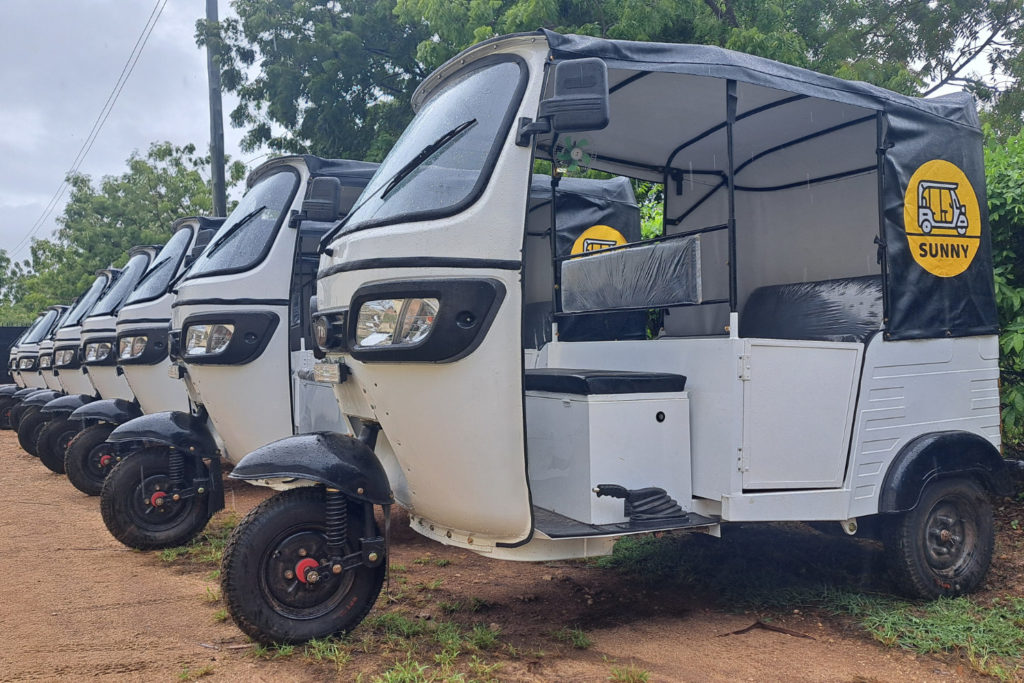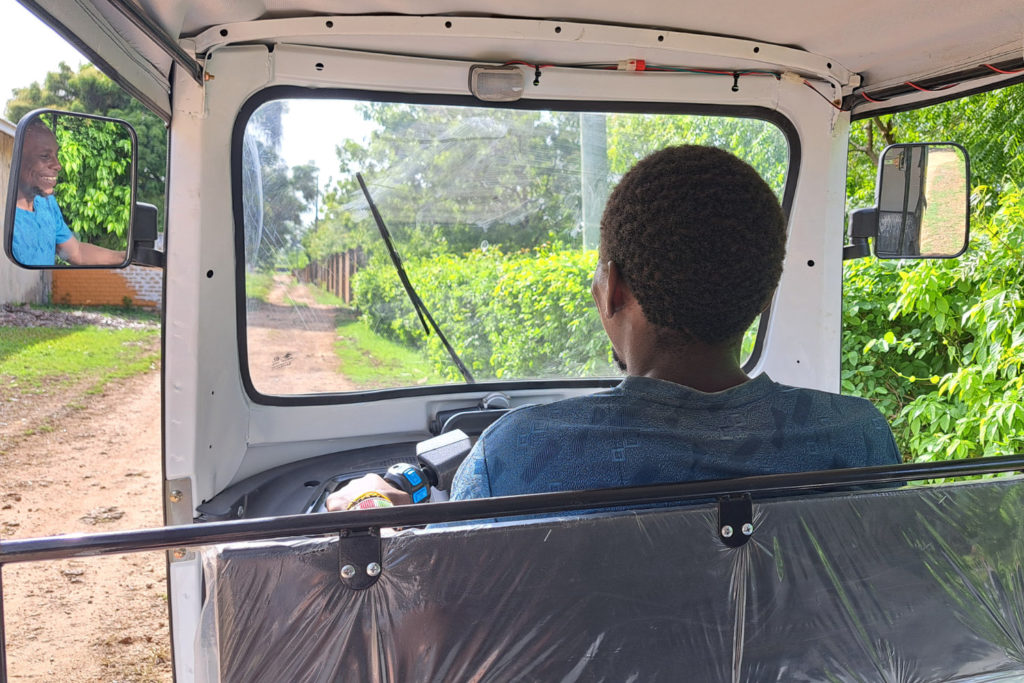Diani Beach, Kenya, May 2025: The first 25 electrically powered three-wheeled taxis are leaving the workshop of Sunny Tuk-Tuk Ltd., which was set up by atmosfair. Unlike conventional tuk-tuks, our three-wheelers don’t get their energy from diesel or gasoline, but from renewable electricity. This allows taxi drivers in the Indian Ocean region to transport people without emitting CO₂.
Over 90% of grid electricity in Kenya is already generated using renewable energy. Local and temporal production surpluses can be put to good use by charging electric vehicles – just like our new tuk-tuks. At midday, they draw green electricity from rooftop solar installations; at night, from the Kenyan power grid, which is fed by geothermal, hydro, and wind power.
atmosfair made Sunny Tuk-Tuk’s work possible. Thanks to our funding, they could not only build the workshop for final assembly of the e-tuk-tuks, but the fair financing also reduces the rental costs that drivers pay for their vehicles. This makes the climate-friendly e-tuk-tuks attractive on two levels: they’re also significantly cheaper to operate.

“There’s enough space on the roof of the assembly hall to install solar cells with a capacity of 20 kilowatts. Once we’ve installed them, drivers will be able to charge their tuk-tuks directly at the factory,” explains atmosfair project manager Zoltán Müller-Karpe.
Solar power instead of fossil fuels isn’t just good for the climate. Taxi drivers save real money on every trip: it costs less than half as much to charge the battery as it does to fill up with diesel for the same range. Stefan Wentzel, the managing director of Sunny Tuk-Tuk, knows what this means for drivers: “A tuk-tuk driver here earns an average of 21 euros per day. Until now, he had to spend a third of that on vehicle rental and a third on fuel, leaving him with only seven euros as income. With an e-tuk-tuk, however, he can keep 11 euros per day.”
Tuk-Tuks Use Surplus Electricity
At Sunny Tuk-Tuk, 3 employees assemble pre-manufactured components imported from abroad into finished vehicles. Sunny Tuk-Tuk remains responsible for the three-wheelers even after production. The company manages and maintains its fleet and rents the vehicles to drivers.

The e-tuk-tuks operate along a 60-kilometer stretch of Kenya’s coast, beginning 30 kilometers south of Diani Beach and extending north to the suburbs of Mombasa. In the future, we will enable taxi drivers to charge their vehicles at other atmosfair locations as well. atmosfair operates additional solar installations for electric cooking at schools or for water kiosks, whose production surplus can be put to good use for e-tuk-tuks.
With our climate protection projects, we create long-term infrastructure. By enabling both cost-effective vehicle production and the supply of renewable electricity, we ensure that e-tuk-tuks represent an attractive alternative – for both drivers and users. Additionally, our existing solar projects benefit from being able to utilize their installations more effectively. This way, we make the best possible use of our resources.
Clean Mobility on Kenya’s Coast
Tuk-tuks, together with “matatu” minibuses and “bodaboda” motorcycle taxis, handle most of the local transport in Kenya’s coastal region. Tuk-tuks combine the advantages of flexible use of a motorcycle taxi with the comfort of sun and rain protection. By building electrically powered tuk-tuks, we’re not only creating less noise and cleaner air in the coastal cities. We’re also increasing the efficiency of our solar installations by using surplus energy. This way, we save three to four tons of CO₂ per vehicle per year that a fossil fuel-powered tuk-tuk would emit in the same period. With this pilot project, atmosfair is testing the feasibility and CO₂ saving potential of electric small vehicles. After successfully completing the pilot phase, we plan to have the CO₂ savings officially certified.


 Share
Share Tweet
Tweet